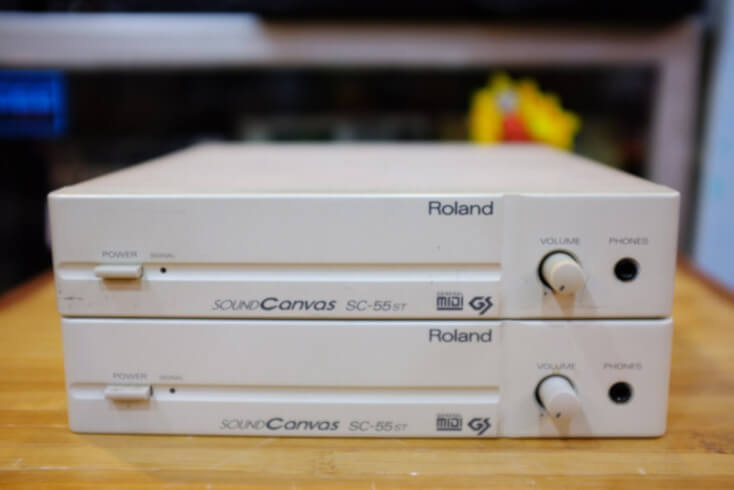

The instrument sounds are organised into the basic set of 128 (called, for some unfathomable reason, 'Capital' sounds), and alternative versions of 35 of these, called (perfectly reasonably) 'Variation' sounds. Some of the electric guitar sounds are killers, the saxes are very convincing, and for the hip-hop crowd there's a complete set of TR808 samples.

Most of the sounds - or reasonable, sometimes better-sounding, equivalents - from the MT32 and CM64 modules are there, and the list includes (more or less in order of program number): pianos: electric keyboards mallet percussion organs guitars basses strings voices brass winds lead synths pads ethnic instruments and sound effects like screams, helicopters, door slams, horse gallops, and explosions. Whatever you call it, the 128 basic instrumental sounds and the 150 or so percussion and sound effects samples are very convincing. The synthesis method used is RS-PCM (as found on the U20 keyboard and U220 sound module), which is Roland-ese for resynthesised samples. The good news is that they are very high in quality, and there are a lot of them. You are allowed some programmability, which we'll get into in a moment, but the sounds are pretty much designed to be used as they come. SOUNDS The sounds in the Sound Canvas are essentially fixed in ROM. The Sound Canvas offers built-in reverb and chorus (more about which later), and each Part has reverb and chorus send levels which, like volume and pan, can be preset or MIDI-controlled (using, respectively, controllers 91 and 93). A Part can also be set to 'Random' pan, in which case each successive note pops up in a different place in the stereo image. These can be preset, or you can control them dynamically over MIDI using continuous controller numbers 7 and 10, respectively, on the channel the Part is set up to receive. Each Part has its own level and pan setting. However, you can reserve a certain number of voices for a Part if there is a danger of overflow and you want to make sure voices are not stolen from that instrument. Polyphony is dynamically allocated, so you don't have to pre-assign voices to particular Parts. You can create thicker textures by assigning more than one Part to the same channel, and one or two Parts can be designated as drums, which use their own entirely different set of sounds. (Compare this with the MT32, which can play 32 partials, but since many of that unit's instruments use three or more partials, the practical polyphony is somewhat lower.) It organises its sounds into 16 Parts, each of which responds on its own MIDI channel. Each voice is a 'partial' the majority of the patches ('instruments') in the unit use only one partial, but quite a few use two, and with those instruments the polyphony is accordingly reduced. STRUCTURE The Sound Canvas can respond simultaneously to all 16 MIDI channels, and produce 24 voices of polyphony.


 0 kommentar(er)
0 kommentar(er)
